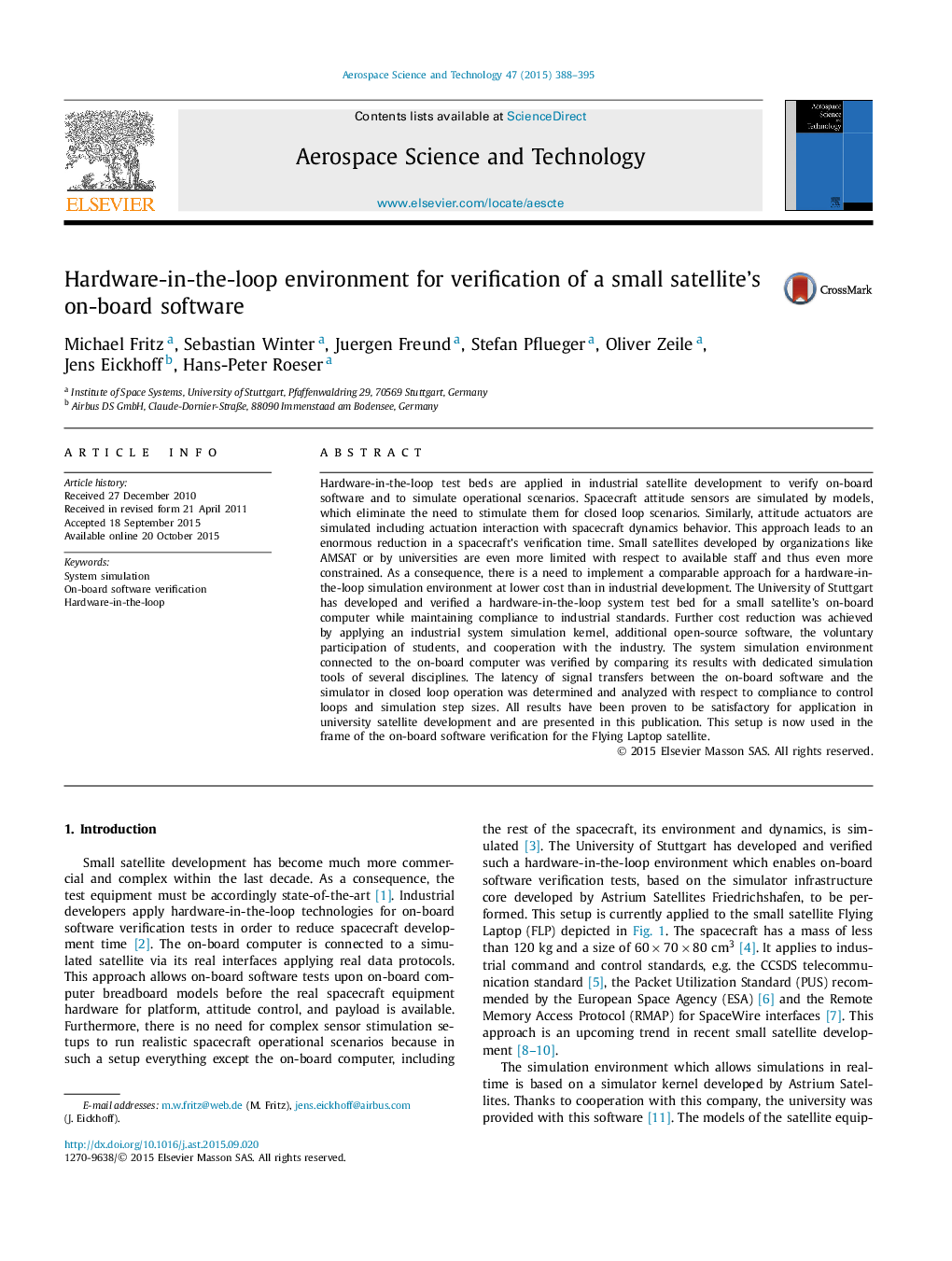| Article ID | Journal | Published Year | Pages | File Type |
|---|---|---|---|---|
| 8058761 | Aerospace Science and Technology | 2015 | 8 Pages |
Abstract
Hardware-in-the-loop test beds are applied in industrial satellite development to verify on-board software and to simulate operational scenarios. Spacecraft attitude sensors are simulated by models, which eliminate the need to stimulate them for closed loop scenarios. Similarly, attitude actuators are simulated including actuation interaction with spacecraft dynamics behavior. This approach leads to an enormous reduction in a spacecraft's verification time. Small satellites developed by organizations like AMSAT or by universities are even more limited with respect to available staff and thus even more constrained. As a consequence, there is a need to implement a comparable approach for a hardware-in-the-loop simulation environment at lower cost than in industrial development. The University of Stuttgart has developed and verified a hardware-in-the-loop system test bed for a small satellite's on-board computer while maintaining compliance to industrial standards. Further cost reduction was achieved by applying an industrial system simulation kernel, additional open-source software, the voluntary participation of students, and cooperation with the industry. The system simulation environment connected to the on-board computer was verified by comparing its results with dedicated simulation tools of several disciplines. The latency of signal transfers between the on-board software and the simulator in closed loop operation was determined and analyzed with respect to compliance to control loops and simulation step sizes. All results have been proven to be satisfactory for application in university satellite development and are presented in this publication. This setup is now used in the frame of the on-board software verification for the Flying Laptop satellite.
Related Topics
Physical Sciences and Engineering
Engineering
Aerospace Engineering
Authors
Michael Fritz, Sebastian Winter, Juergen Freund, Stefan Pflueger, Oliver Zeile, Jens Eickhoff, Hans-Peter Roeser,
